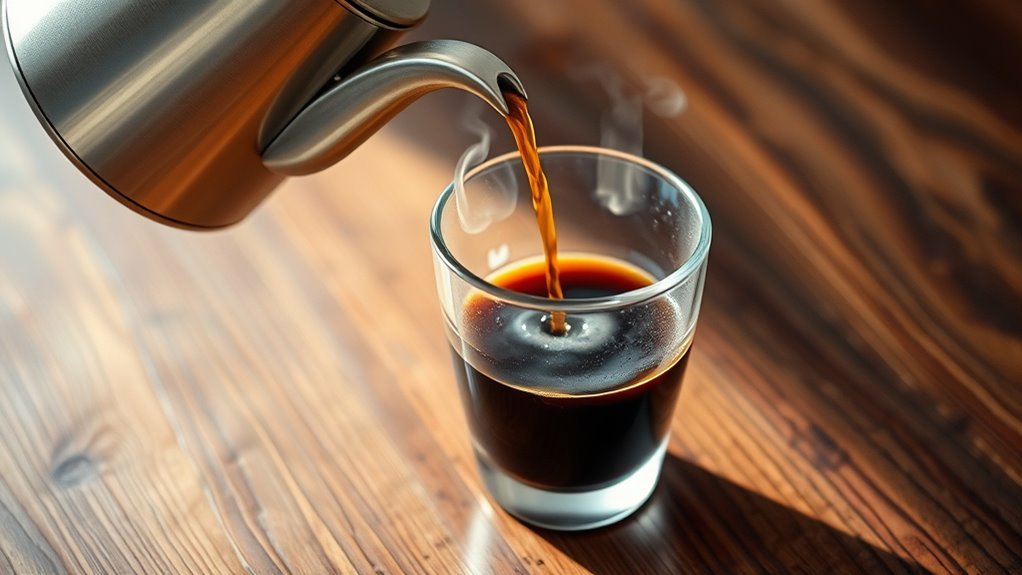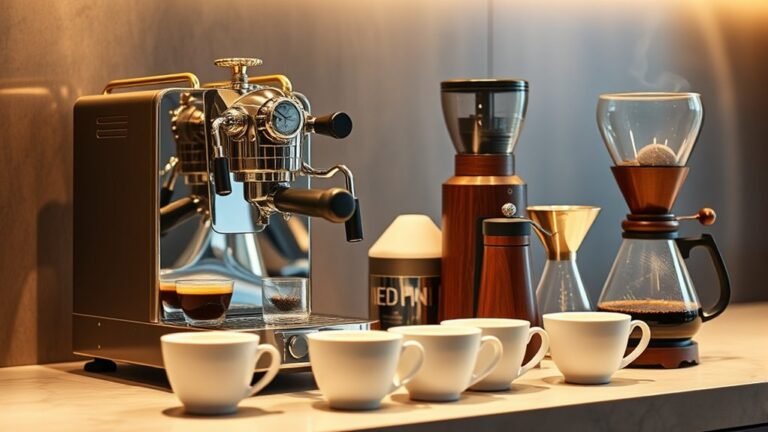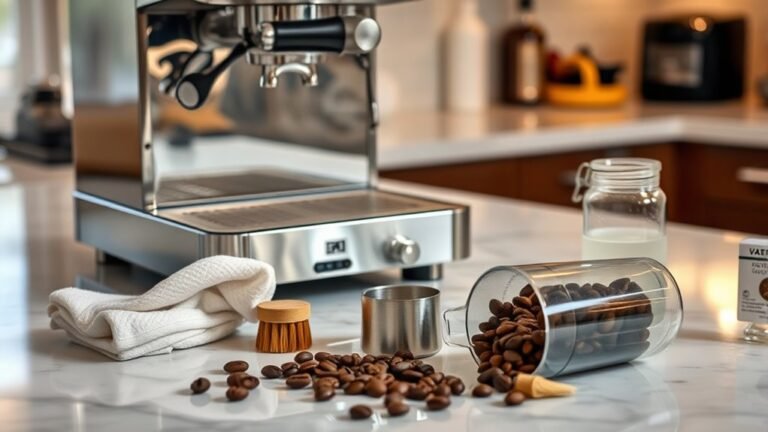Can You Pour Hot Coffee Into Glass
Yes, you can pour hot coffee into glass, but you need to choose the right type. Borosilicate or tempered glass works best due to their thermal resistance. Regular soda-lime or crystal glass may shatter from heat. To minimize risks, consider preheating the glass and avoid sudden temperature changes, like adding ice. Always inspect your glass for cracks. Understanding these properties helps guarantee a safer experience. There’s more to discover about glass options and best practices that can enhance your enjoyment.
Understanding Glass Properties
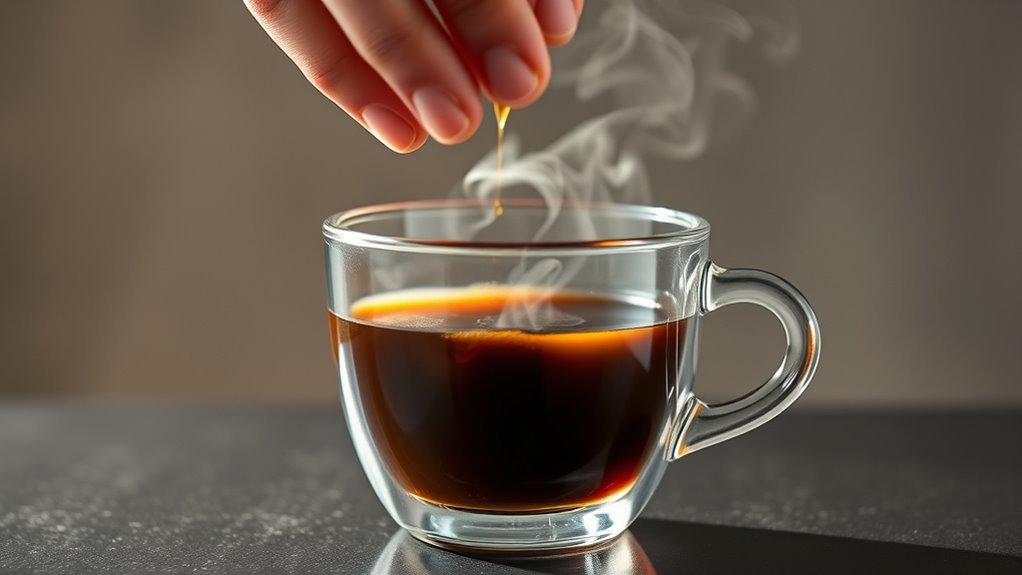
When considering whether you can pour hot coffee into glass, it’s vital to understand the properties of glass itself. Glass is a material that exhibits thermal expansion; it expands when heated and contracts upon cooling. This property can lead to stress within the material, especially if temperature changes are rapid. Additionally, glass has relatively low heat conductivity, meaning it doesn’t transfer heat as efficiently as metals. When you pour hot coffee into glass, the internal temperature may rise unevenly, increasing the risk of fractures. As a result, while many types of glass can withstand hot liquids, understanding these properties allows you to make informed choices. Balancing your desire for freedom in beverage enjoyment with the scientific realities of glass is essential.
Types of Glass Suitable for Hot Liquids
Not all glass is created equal when it comes to handling hot liquids. If you’re considering pouring hot coffee into glass, you need to choose wisely. Heat resistant glass is essential for preventing breakage. Among the best options are borosilicate glasses, known for their durability and thermal resistance. Here’s a quick comparison:
| Type of Glass | Properties |
|---|---|
| Soda-lime Glass | Not heat resistant |
| Borosilicate Glass | Excellent thermal resistance |
| Tempered Glass | Good for heat, but limited |
| Crystal Glass | Can shatter under heat |
| Pyrex | Strong and heat resistant |
Factors Affecting Thermal Shock Resistance
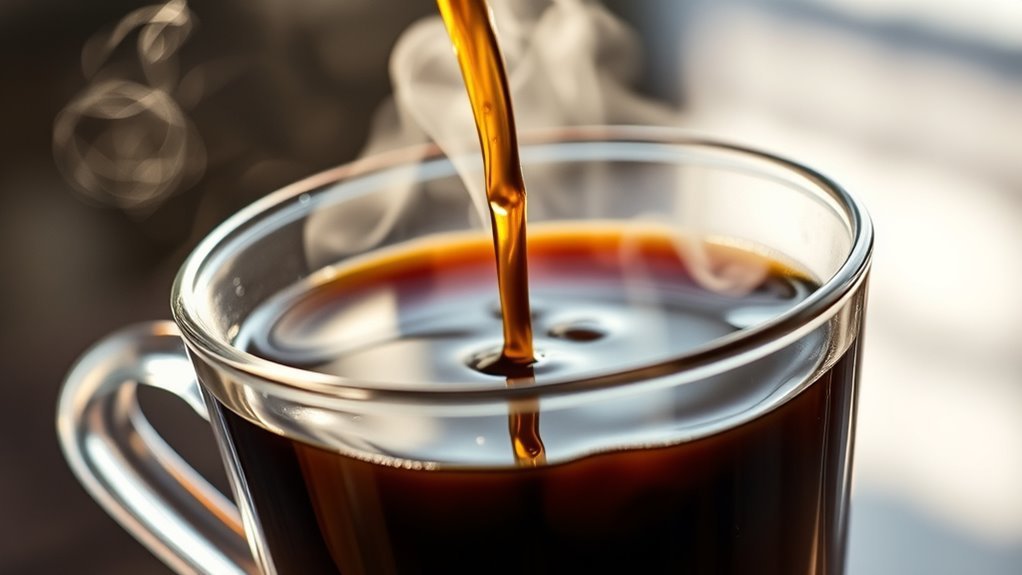
The type of glass you choose greatly impacts its ability to withstand thermal shock, which is the stress caused by rapid temperature changes. Several factors influence this resistance, including:
- Thermal Conductivity: Higher thermal conductivity allows heat to disperse more quickly, reducing stress.
- Thermal Expansion: Glass with lower thermal expansion coefficients will expand less when heated, minimizing risk.
- Thickness: Thicker glass can generally handle temperature shifts better, though it may retain heat longer.
- Manufacturing Quality: Well-made glass often has fewer imperfections, enhancing its overall durability against thermal shock.
Understanding these factors helps you make informed choices about glassware for hot beverages, ensuring you enjoy your coffee without worrying about cracks or breaks.
Tips for Safely Using Glass for Hot Beverages
Although pouring hot coffee into glass can be safe, adhering to certain guidelines is essential to prevent accidents. First, choose glass with adequate thickness; thicker glass generally withstands temperature changes better, reducing the risk of breakage. Always preheat the glass by rinsing it with warm water before adding hot coffee, as this helps minimize thermal shock. Avoid sudden temperature changes, like placing ice in a hot glass. Additionally, use caution when handling the glass; a hot cup can easily slip from your grip if you’re not careful. Finally, inspect the glass for cracks or chips before use, as these defects can compromise its integrity. By following these safety precautions, you can enjoy your hot beverages with peace of mind.
Alternatives to Glass for Hot Coffee
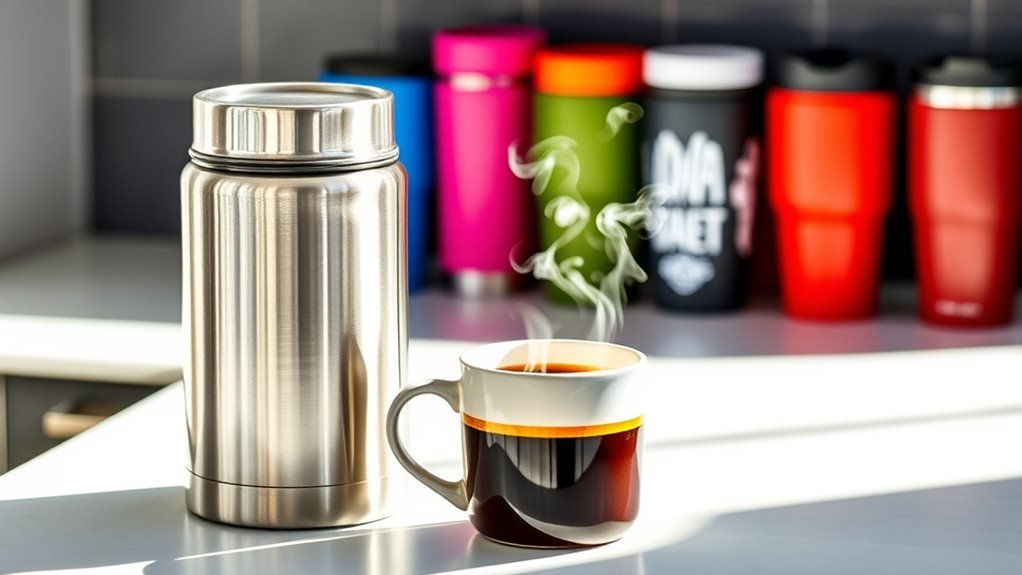
When it comes to alternatives for enjoying hot coffee, several materials can effectively replace glass. Each option offers unique benefits, ensuring your coffee stays warm without compromising safety or taste.
Explore various materials to enjoy your hot coffee safely and stylishly, ensuring warmth and flavor without glass.
- Ceramic Mugs: These retain heat well and come in various designs, enhancing your coffee experience.
- Stainless Steel: Known for its durability, stainless steel is excellent for insulation, keeping your beverage hot longer.
- Borosilicate Glass: While still glass, this type can withstand high temperatures better than regular glass.
- Travel Mugs: Often made from insulated materials, these are perfect for coffee on the go without worrying about breakage.
Choosing the right alternative allows you to savor your hot coffee with freedom and peace of mind.
Frequently Asked Questions
Can I Use Recycled Glass for Hot Coffee?
Using recycled glass for hot coffee can raise safety concerns. While many recycled glass products are designed for heat resistance, it’s essential to verify the specific type. Some recycled glass may contain impurities that could cause it to crack or shatter under high temperatures. Always check if the glass is labeled as microwave or dishwasher safe, as this indicates it’s been tested for durability. Prioritizing safety guarantees you enjoy your coffee without worry.
What Happens if I Pour Hot Coffee Into Cold Glass?
If you think pouring hot coffee into cold glass is a great idea, you might be in for a surprise. The drastic temperature difference can cause thermal shock, making the glass crack or shatter. While some glasses are designed for heat, others lack the durability to withstand such stress. So, unless you enjoy cleaning up shattered pieces, it’s best to avoid this risky pour and choose the right vessel for your coffee instead.
Is Tempered Glass the Same as Heat-Resistant Glass?
Tempered glass isn’t exactly the same as heat-resistant glass, though both have unique properties. You’ll find that tempered glass is designed to withstand thermal stress and impact, making it ideal for various applications. However, heat-resistant glass, like borosilicate, can endure higher temperatures and is often used in laboratory settings. Understanding these differences helps you choose the right material for specific needs, especially when considering safety and durability in heat-exposed environments.
Can I Microwave Glass Coffee Mugs?
You can microwave glass coffee mugs, but it’s crucial to verify they’re labeled microwave-safe. Notably, about 80% of glass containers are designed to withstand microwave heat without breaking. This reflects their durability and resistance to thermal stress. However, avoid sudden temperature changes, as this can cause cracks. Always check for any metal accents or decorations, as they can compromise microwave safety. By following these guidelines, you can enjoy your coffee without worry.
How Do I Clean Glass Coffee Containers Safely?
To clean glass coffee containers safely, you’ll want to use gentle cleaning techniques that maintain the glass’s integrity. Start with warm, soapy water and a soft sponge to avoid scratches. For tougher stains, consider a mixture of baking soda and water. Rinse thoroughly to remove any residue. Regular glass maintenance, like avoiding abrasive cleaners, will help preserve your containers and keep them looking pristine. Remember, a little care goes a long way!
